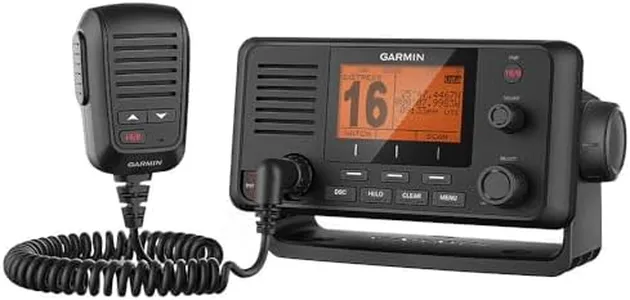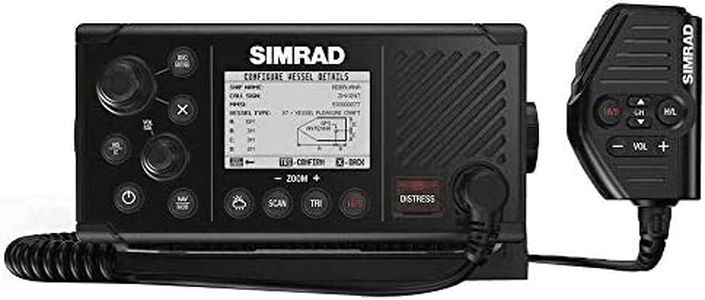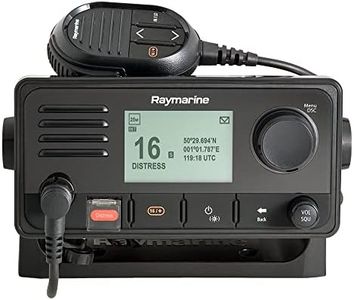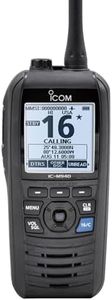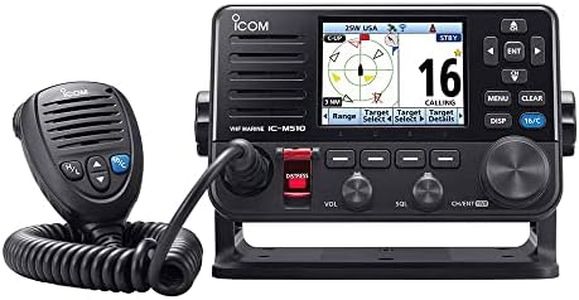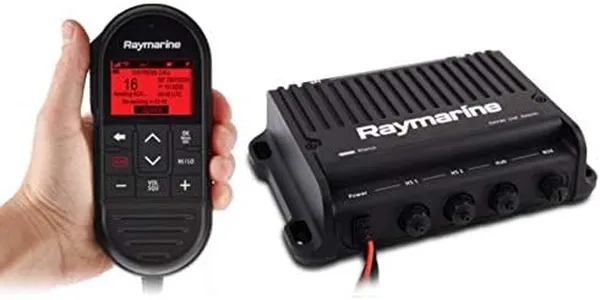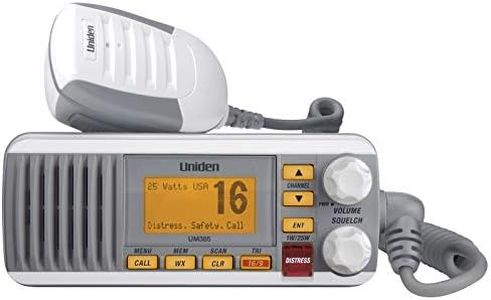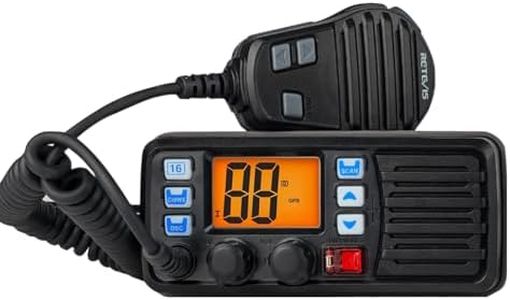10 Best Marine Vhf Radios 2025 in the United States
Our technology thoroughly searches through the online shopping world, reviewing hundreds of sites. We then process and analyze this information, updating in real-time to bring you the latest top-rated products. This way, you always get the best and most current options available.

Our Top Picks
Winner
Garmin 0100209800 VHF 215 AIS, Slate Gray with Amp Yellow Band
Most important from
14 reviews
The Garmin 0100209800 VHF 215 AIS radio is designed for marine enthusiasts who require reliable communication on the water. One of its notable strengths is the impressive talking range of up to 36 miles, making it suitable for both coastal and offshore use. The inclusion of 10 channels allows users to easily switch between communications, which is a plus for busy maritime environments. The radio operates on VHF frequencies between 156.050 MHz to 163.275 MHz, which includes important weather channels, enhancing safety during navigation.
The anti-glare display is another commendable feature, ensuring that users can read the screen in various lighting conditions, a vital aspect when out at sea. Furthermore, the unit is designed to be water-resistant, offering peace of mind for those frequently exposed to water.
There are a few drawbacks to consider. While the radio is described as water-resistant, it may not be fully waterproof, which could be a concern in heavy rain or extreme conditions. The size and weight, at 5.3 pounds, might make it less portable than smaller handheld models, which could be a factor for users looking for a compact communication device.
Most important from
14 reviews
Simrad 000-14473-001 Vhf, Rs40-b, W/class B Ais, Hailer
The Simrad RS40-B VHF radio is a solid choice for boaters needing reliable communication and navigation features. It includes integrated AIS and GPS receivers, which is a big plus for safety and situational awareness on the water. The radio covers the essential VHF frequency range (156-174 MHz) and supports 8 channels, which is enough for common marine communications, though some might prefer more channels for flexibility. It is water resistant, suitable for marine conditions but may not be fully waterproof for extreme exposure.
The unit weighs around 5.5 pounds and measures 18 x 10 x 6 inches, so it’s somewhat bulky compared to smaller handheld models, meaning it’s more suited for mounting on a boat rather than carrying around. The inclusion of a removable fist mic and mounting accessories adds convenience. The interface appears straightforward, with a suncover to help visibility in bright conditions.
If you need a radio with a wider channel selection, full waterproofing, or detailed battery info, this model might fall short. It remains a dependable option for those prioritizing AIS integration and solid build quality for fixed installation rather than handheld use.
Raymarine E70517, Ray73 Marine VHF Radio with Hailer and GPS, Black, Small
The Raymarine E70517, also known as the Ray73 Marine VHF Radio, is a solid choice for boaters looking for a compact communication tool with extras like a hailer and GPS. It is fairly small and weighs about 5 pounds, making it easy to handle and install without taking up much space. The radio covers the standard marine VHF frequency range and includes 8 channels, which is somewhat limited compared to many radios that offer up to 25 or more channels, potentially restricting communication options in busy areas. It supports wireless connectivity and has front and rear connection setups for flexible installation, including options for a second station and external hailing horn.
The unit is water resistant but not fully waterproof, so it can handle splashes but might need extra protection in very wet conditions. The display and interface appear straightforward and functional rather than advanced or touchscreen. This radio is well suited to casual boaters or those who want integrated GPS and hailer capabilities in a simple package, but it may not meet the needs of users requiring extensive channel options or advanced safety features like Digital Selective Calling.


